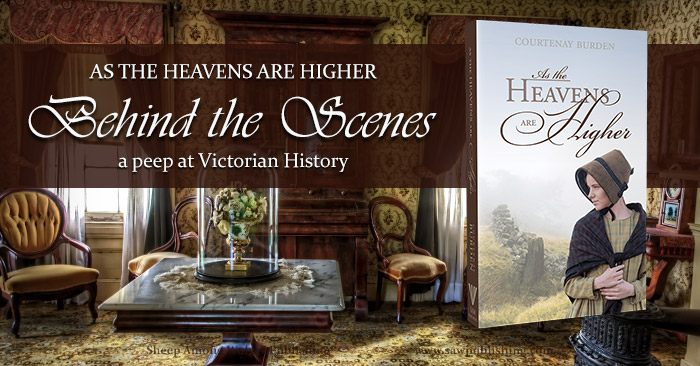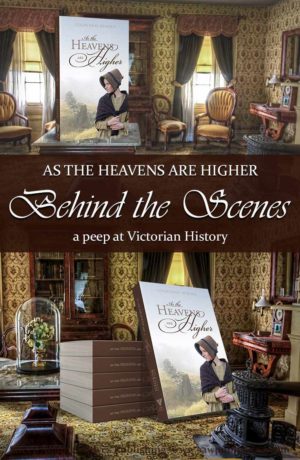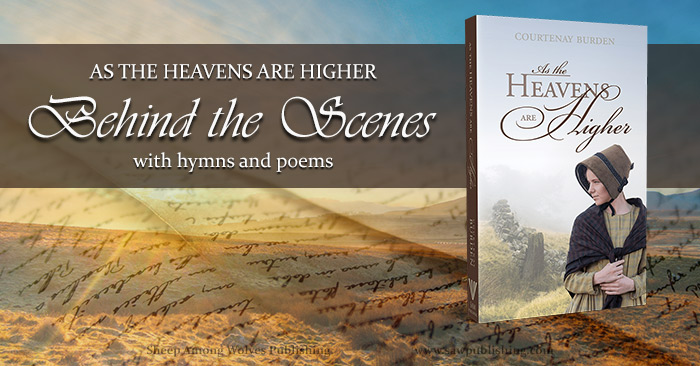As the Heavens Are Higher: A Peep at Victorian History
 Are you ready for a peep at the Victorian history behind As the Heavens Are Higher?
Are you ready for a peep at the Victorian history behind As the Heavens Are Higher?
As most of you already know, I just happen to be extravagantly, outrageously, passionately fond of Victorian history. While much of As the Heavens Are Higher was constructed from the general culture, rather than specific events, of Victorian England, here’s a look at a few of the real-life pieces that found their way into the story:
The Duke of Northumberland
Algernon Percy, 4th Duke of Northumberland, and his wife (Lady Eleanor Grosvenor) are the only two factual characters in As the Heavens Are Higher.
The duke’s career in the Royal Navy, and his passion for rescue work, are taken from real life. In 1851 he did indeed offer a £200 prize for a new self-righting lifeboat. The prize was won by James Beeching, and became the standard lifeboat design of the Royal National Lifeboat Institution, of which the Duke was president.
While both the Duke and Duchess are drawn with fictional personalities in As the Heavens Are Higher, I have tried to create an image of their kind-hearted interest in philanthropic work—especially, although not only, work related to science and the sea.
 The Crimean War
The Crimean War
The greatest international crisis of mid-Victorian England was unquestionably the Crimean War (1853-1856). It was fought between Russia and a four-way alliance of Great Britain, France, Sardinia and the Ottoman Empire.
Its chief historical significance comes from its being the scene of Florence Nightingale’s revolutionary work in nursing. It was also made famous by the tragic “Charge of the Light Brigade”—immortalized in Tennyson’s poem.
The Crimean War begins during the timeframe of As the Heavens Are Higher, and continues beyond the end of the novel, eventually terminating in the treaty of Paris, March, 1856. While it does not play a major role in the book, I have introduced glimpses of the mounting political tension in one of Lady Bradstock’s conversations with Mrs. Westall.
Bradshaw’s Railway Guide
As my family can testify, Bradshaw’s Railway Guide is one periodical that holds a hypnotizing fascination for me. Can I draft a full-length novel without spending at least one day floundering in railway timetables? Maybe. If I try hard. Then again. Maybe not!
Railway scheduling played a major role in 19th/early 20th century transportation. And the definitive authority on railway scheduling was the time-honoured George Bradshaw. With the first edition published in October of 1839, Bradshaw’s railway guide became an icon of British travel, and remains a valuable resource for historians today.
Sir Hubert’s Story
The story of Sir Hubert is obviously not Victorian—in fact, as he dies in the 1550’s, he’s the one part of the novel that doesn’t fall into Victorian history at all.
However, Sir Hubert does represent an essentially Victorian passion—the romanticization of martyrdom. In no era does English literature so deeply reflect appreciation for this type of religiously/theoretically resolved tragedy—no era so delights in being made to cry, and to admire, and to triumph, all in the same heartbeat, by the hero who dies for a cause.
It is a classically Victorian literary feature. And thus, while Sir Hubert belongs historically to the brief, blood-stained reign of Mary I, he is at the same time completely and quintessentially the child of the Victorians.
Victorian History and As the Heavens Are Higher
Historical fiction plays a unique role in Western education. Paradoxically enough, it is frequently the only history a reader truly absorbs. While the author may be pulling from their imagination on characters, details, and plot, the reader is depending on them to create a believable and historically accurate picture.
Reproducing Victorian history on a fictional canvass is one of the greatest joys of writing, in my opinion. And it is a joy I have the privilege and delight of sharing with all of you!
Curious for more peeps behind the scenes of As the Heavens Are Higher? See our previous post:
You might also enjoy:

Hymns are a great supplemental tool to bring American history to life. This post takes a look at the early 1800’s, with a special spotlight on the hymn “Softly Now the Light of Day.”

Do you find your highest aspirations lost in the everyday-ness of life? This FREE poetry download will challenge you to look at your daily world in a new and more beautiful way.

Sap is beginning to flow in the trees and Grandpa needs help in his sugar bush! One of the cleanest, most family-friendly books I’ve ever reviewed, At Grandpa’s Sugar Bush is an informative and enjoyable read-aloud.

